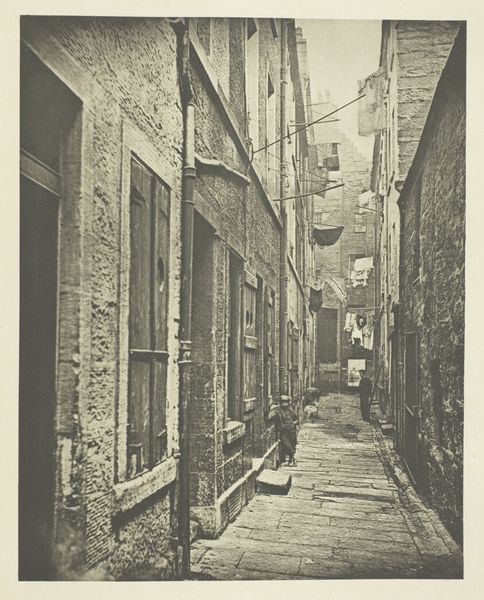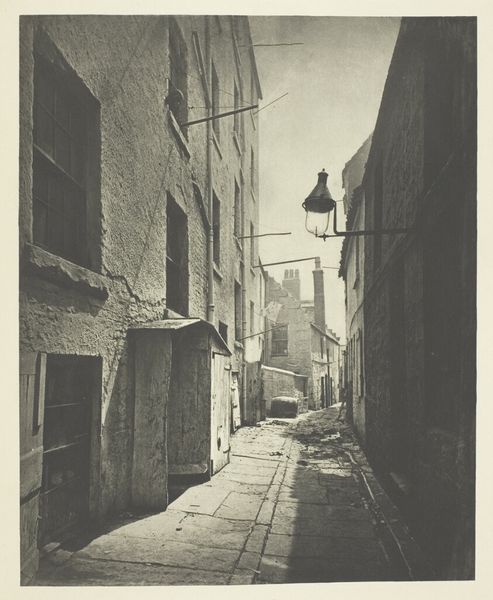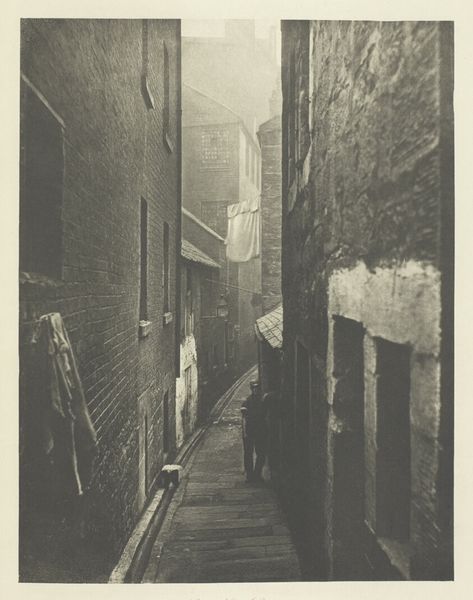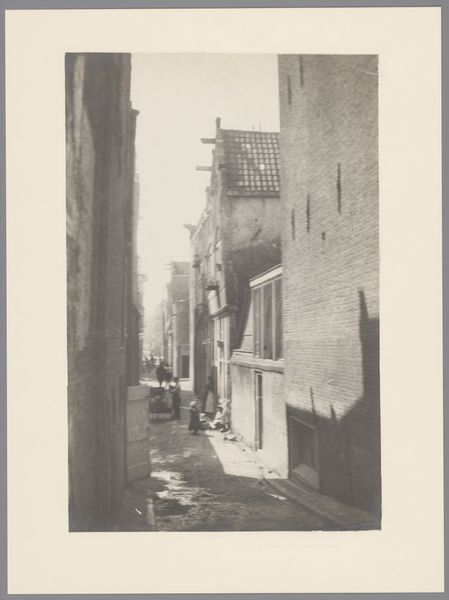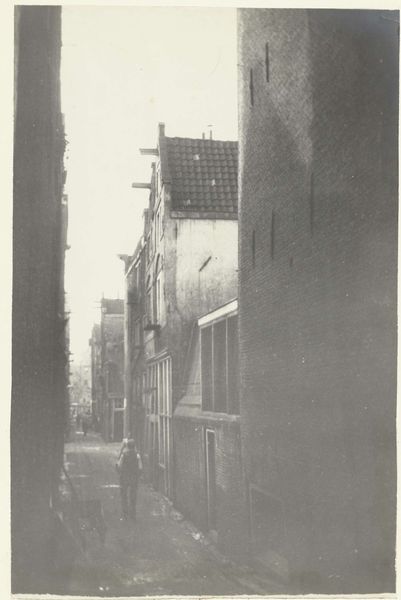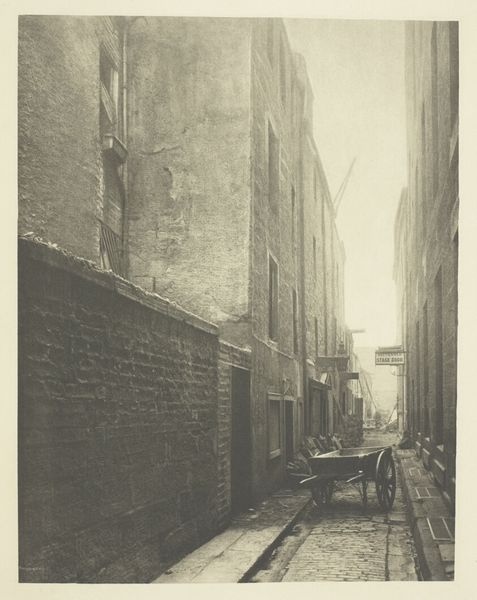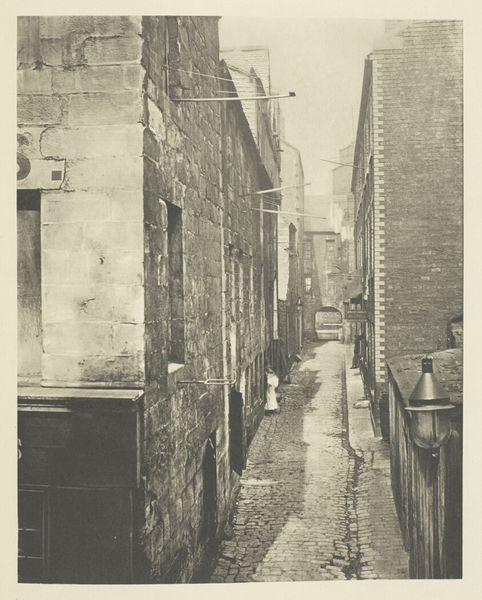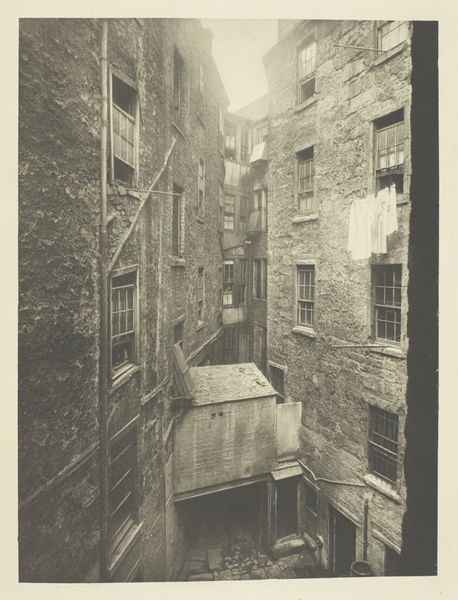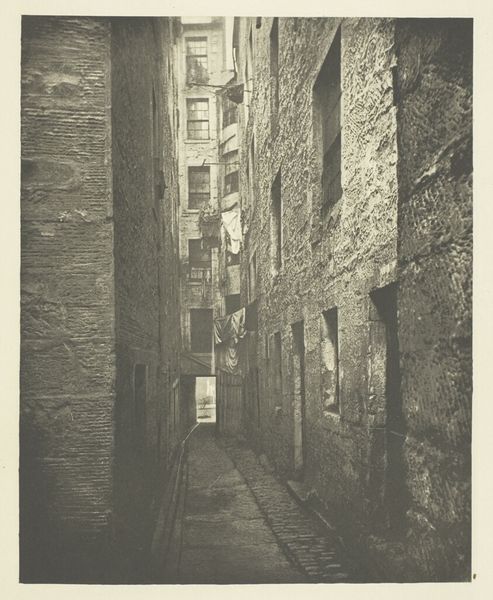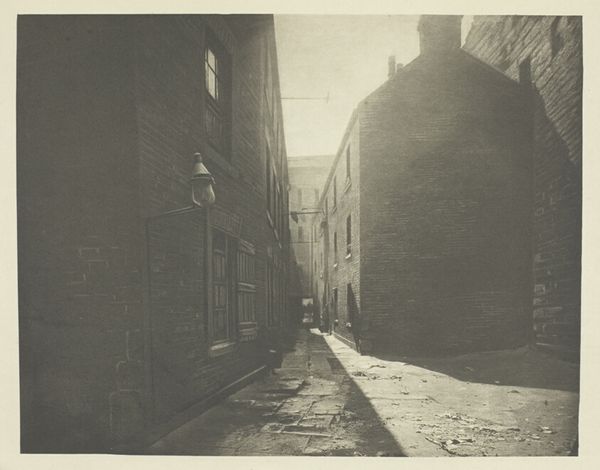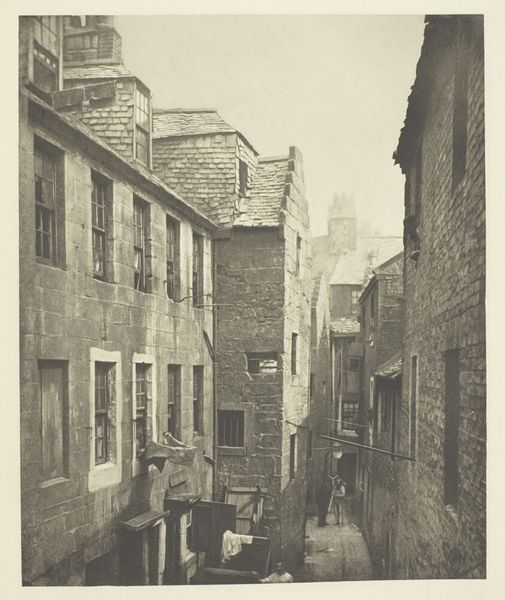
print, photography
#
print photography
#
16_19th-century
# print
#
archive photography
#
street-photography
#
photography
#
historical photography
#
cityscape
#
realism
Dimensions: 22.2 × 17.7 cm (image); 37.9 × 27.8 cm (paper)
Copyright: Public Domain
Editor: This photograph, "Close No. 29 Gallowgate," was taken in 1868 by Thomas Annan. It depicts a narrow alleyway, and it's currently held at The Art Institute of Chicago. There's a kind of claustrophobic feeling about it, due to the height of the buildings and how they close in on the people gathered in the distance. What draws your attention in this image? Curator: It's true, the composition itself evokes a feeling of confinement, a kind of visual echo of the social conditions Annan was documenting. "Close" is the Scottish term for an alleyway or passageway, often leading to tenements. Think about the people huddled together. Are they merely a happenstance gathering or do they symbolize the density and communal existence of the urban poor at the time? Consider also the bars on the window to the left—what kind of life is being lived there, in contrast to the apparent communal spirit down the close? Editor: That makes me wonder about the children. There are so many huddled in the alley and seem to be interacting with the light, they draw me in. Curator: Precisely. Light in these photographs is never accidental. Look how it illuminates those figures. What could that intense spotlight symbolize, juxtaposed against the darkness of the buildings looming on each side? Are we, the viewers, being asked to 'see' them—to acknowledge their humanity, perhaps their plight? Editor: So, you are saying the image acts as a kind of social commentary, pushing the viewer to think deeply about who inhabits this space. Curator: In a way, yes. Annan's work wasn't just documentary; it was imbued with a profound social awareness, trying to make visible the lives and conditions of a population often overlooked. We are presented not just a street but the story of an environment and its inhabitants. Editor: It's fascinating how a seemingly simple photograph can contain so many layers of meaning. I'll definitely look at street photography differently from now on. Curator: Exactly. And it all begins with considering the image, its components, and what symbols speak to us most powerfully.
Comments
No comments
Be the first to comment and join the conversation on the ultimate creative platform.
